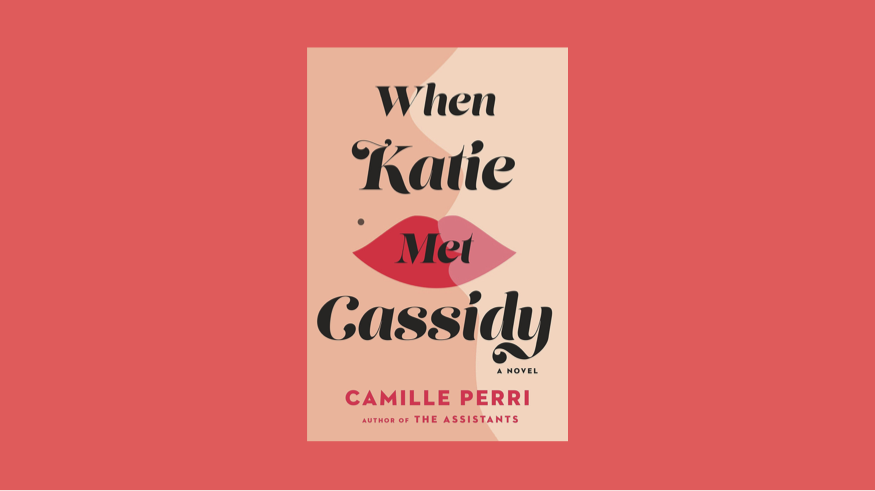Sapphic Book Review: When Katie Met Cassidy
Books are a forms of magic, especially for queers. Language is often used to oppress, marginalize and erase the nuances of LGBTQ+ identity. But it can also be used to reclaim, express, and celebrate the beauty of queer love and experiences.
This is why I deliberately seek literature written by queers, especially women. I usually have to search for them, but Camille Perri’s novel When Katie Met Cassidy jumped out at me while browsing an independent bookstore in Sarasota, Florida.
My initial interest was based on how the title included my name. Cassidy isn't a common name; at least, not something I'm used to seeing printed on a book. Pulling the beige spine out of the shelf, I was met with an aesthetically pleasing front cover design and a blurb from a Vogue review that said: "The delightful, sexy, queer novel of the summer…"
“Cassidy and Katie’s growth reflects the non-linear development of queer identity – we’re always evolving.”
When Katie Met Cassidy is the light-hearted queer rom-com the gays have been waiting for. LGBTQ+ content is often rife with trauma and pain, societal oppression and family entanglement. While this novel doesn’t entirely discount these experiences, the driving force of the plot is the romantic tension between Cassidy and Katie.
Katie is a 28-year-old supposedly straight woman recently dumped by her pretentious fiancé. The book opens with the messiness of her emotional state: clothes littered across her apartment, a maze of unopened boxes, and a wrinkled work uniform. She's a stark contrast to Cassidy, who wakes up early to exercise, wears custom-made men's suits, and sports a slick butch haircut.
The two protagonists meet at work; attorney Cassidy and lawyer Katie are mesmerized by one another. Cassidy is distracted by Katie's attractiveness, while Katie is intrigued by Cassidy's masculine presentation. Their worlds collide when they bump into each other later that night and Katie tags along with Cassidy to a lesbian bar called Metropolis.
Perri's descriptions of seedy queer spaces and sexually-charged nightlife are hilariously exaggerated (although not far off from reality). It's refreshing to read a novel that portrays lesbians as flippant as they are serious. Not every representation of queerness needs to be seamlessly positive — the regulars at Metropolis are messy, funny, confrontational, and shameless. They glide between caricatures and real people, revealing an honest and self-aware expression of performativity.
They’re distinct enough to avoid tropes, but create comical aspects to the novel — like Becky, the ex-vegan chef who specializes in meat dishes. Cassidy is the emotionally unavailable heart-breaker; her hyper-sexual appetite mirroring Shane McCutcheon’s from the L Word. And Katie is a good girl from Kentucky, eager to mold her image in order to please others.
The depth of the novel is the underlying theme of understanding oneself in relation to society, specifically from the perspective of lesbians in their late-twenties and early-thirties. An interview with the the author printed in the back of the book reveals some insight on this choice: "…many people ‘come out’ or unexpectedly change their line of thinking in regard to desire and sexuality much later in life than the cusp of adulthood. I wanted to write about this kind of change, which obviously gets much less treatment."
Since queer people often realize their sexuality much later in life than their heterosexual peers, Perri’s characters reflect the nuanced and fluid journey of queer becoming. There's no script for lesbian women, nor is there a timeline for understanding one's sexuality. Cassidy and Katie’s growth reflects the non-linear development of queer identity – we’re always evolving.
When Katie Met Cassidy is an excellent addition to the bookshelves of lovers of lesbian literature and rom-coms alike. This story is layered with amusing circumstances, endearing romance, and entertaining portrayals of lesbian life in NYC. It’s simple storyline and language makes this novel an accessible, queer gem.
Cassidy Scanlon is a Capricorn poet and witch who uses her artistic gifts as a channel for healing herself and others. She writes poetry and CNF about mental health, astrology, queer love, pop culture representation, and how social structures shape our perceptions of history and mythology. When she’s not writing, she can be found petting the local stray cats, exploring the swamps of Florida, reading 5 books at a time, and unwinding with her Leo girlfriend.
You can visit her astrology blog Mercurial Musings and explore more of her publications on her website.

